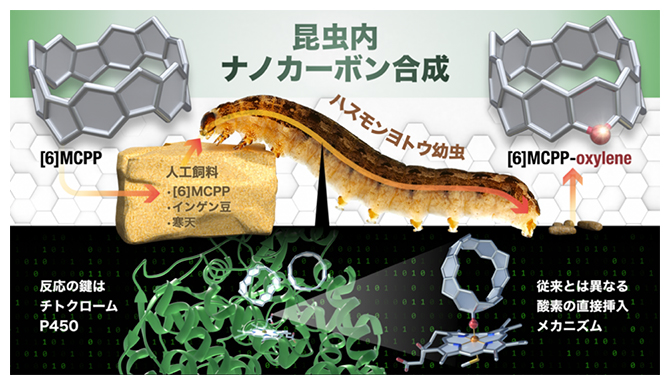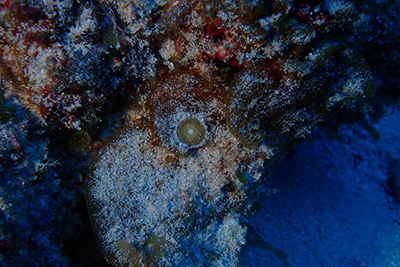2025-06-06 理化学研究所,名古屋大学,科学技術振興機構

<関連情報>
- https://www.riken.jp/press/2025/20250606_1/index.html
- https://www.science.org/doi/10.1126/science.adp9384
酸素ドープ分子ナノカーボンの昆虫内合成 In-insect synthesis of oxygen-doped molecular nanocarbons
Atsushi Usami, Hideya Kono, Vic Austen, Quan Manh Phung, […] , and Kenichiro Itami
Science Published:5 Jun 2025
DOI:https://doi.org/10.1126/science.adp9384
Editor’s summary
The insertion of oxygen atoms into carbon belt and ring molecules was achieved after feeding the substrates to tobacco cutworm (Spodoptera litura). Usami et al. explored whether insects could process a carbon nanoring, methylene-bridged [6]cycloparaphenylene, through a xenobiotic pathway. Of those tested, only S. litura survived, and examination of its excretions showed that it converted this molecule to an unusual oxylene derivative in 10% yield. For [n]cycloparaphenylenes, oxygen atoms were inserted into the bonds between phenyl groups. —Phil Szuromi
Abstract
Many functional molecules and materials have been produced with organic chemistry or with in vitro enzymatic approaches. Individual organisms, such as insects, have the potential to serve as natural reaction platforms in which high densities of multiple enzymes can perform new and complex reactions. We report an “in-insect” unnatural product synthesis that takes advantage of their xenobiotic metabolism. We selectively transform belt- and ring-shaped molecular nanocarbons into otherwise difficult-to-prepare derivatives in which oxygen atoms are inserted into aromatic rings. Cytochrome P450 variants are most likely the enzymes responsible for this reaction. Molecular dynamics simulations and quantum chemical calculations indicated a possible mode of substrate incorporation into the enzyme and an unconventional mechanism of direct oxygen insertion into carbon–carbon bonds.


